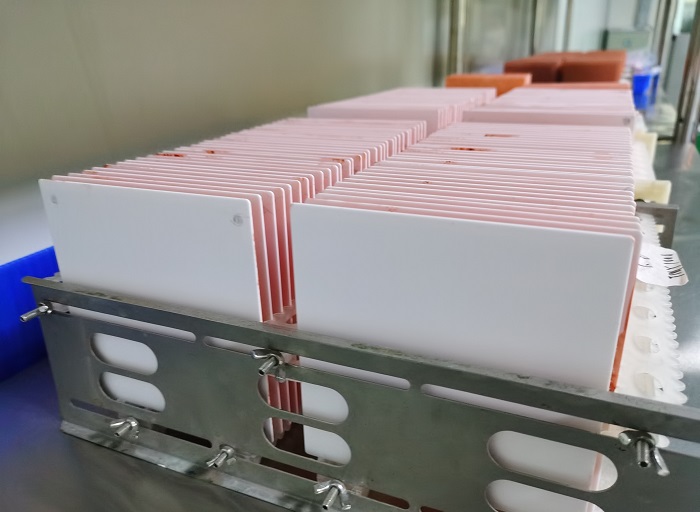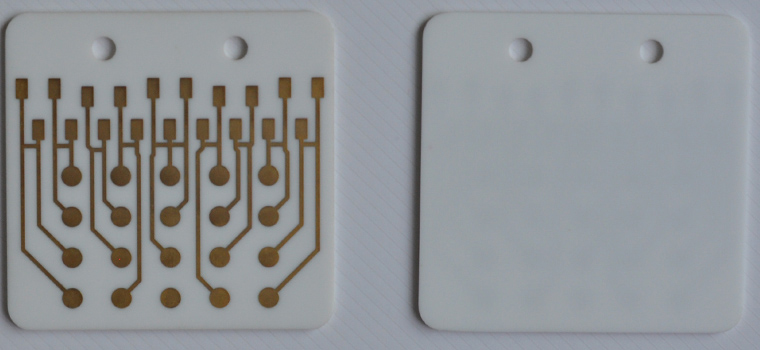What Factor Affects the Cost of Aluminum Nitride Ceramic Substrate?
In the rapid development era of electronics and semiconductors, the increase in integration level of electronic systems will lead to higher power density and an increase in heat generated by electronic components and overall systems. Therefore, heat dissipation issue is a top priority in electronic package.
Under this situation, ceramic PCB stands out and win the market because of its excellent thermal conductivity and great coefficient of thermal expansion (CTE) properties, particularly those made from aluminum nitride (AlN) substrates. Though it has much higher price than other substrates, it still in short supply and even being difficult to purchase. Do you know why it cost higher? Let’s move on.
What Makes AlN Ceramic PCB Expensive?
Best Technology has over 15 years of experience in ceramic PCB manufacturing, having supplied ceramic circuit boards to over 1200 cities worldwide. According to our extensive expertise, the reasons of higher price of AlN are simple.
Firstly, the performance is excellent, making it highly desirable and worth the investment. In certain fields, it's irreplaceable, and everyone understands the principle of getting what you pay for. Secondly, the production process is difficult, requiring high-quality raw materials and involving complex manufacturing techniques. Thirdly, demand exceeds supply. The rapid developed market driving the demand growth of AlN ceramic substrate, plus the long manufacturing cycle, leading to the increase in prices. Next, I will explain them in detail.

Why Choose Aluminum Nitride Ceramic Substrate?
At present, the substrate used in packaging mainly uses the high thermal conductivity of the material itself to dissipate the heat of the chip and facilitate the heat exchange with the external environment. For power semiconductor devices, the AlN substrate enable to meet the following requirements:
- High thermal conductivity to meet heat dissipation needs of electronics.
- Excellent heat resistance to accommodate high-temperature (above 200°C) applications of power devices.
- Coefficient of thermal expansion (CTE) can match with the chip to reduce thermal stress.
- Low dielectric constant and excellent high-frequency characteristics to reduce device signal transmission time and improve transmission rate.
- Good corrosion resistance, capable of withstanding erosion from strong acids, alkalis, boiling water, organic solvents, etc.;
- Compact structure to meet the high sealing requirements of electronic devices.

Why it is difficult to produce AlN ceramic substrate?
The quality of almost all ceramic products is greatly influenced by the quality of raw materials, especially for aluminum nitride ceramic substrates. The manufacturing process of aluminum nitride powder is more complex compared to others, which involves several factors, including:
(1)Preparation method of AlN powder
Currently, the main methods for preparing aluminum nitride powder include the Al2O3 powder-carbon thermal reduction method, direct nitridation of Al powder, self-propagating high-temperature synthesis method, chemical vapor deposition method, plasma method, etc. Aluminum nitride powder, as an excellent powder material, the primary processes still in use are carbon thermal reduction and direct nitridation methods. Both of two known for their mature technology, equipment required is relatively simple, high-quality, good yield output, and have been widely applied in industry.
(2)Various Factors Affecting Powder Properties
The performance of aluminum nitride ceramic PCBs directly depends on the characteristics of the raw material, especially the most valuable property of aluminum nitride - its thermal conductivity. There are various factors that affecting its thermal conductivity, such as the content of oxygen and other impurities, sintering density, microstructure, etc. These factors will reflect in the parameters of AlN powder by purity, particle size, shape, etc.
(3) Easy to hydrolyze
Compared to other excellent properties of aluminum nitride, a major issue with AlN powder is its susceptibility to hydrolysis. It easily reacts with hydroxyl groups in moist environments, forming Al(OH)3 on the surface of AlN powder. This will lead to the incorporation of oxygen into the aluminum oxide lattice, thereby reducing its thermal conductivity and altering its physicochemical properties, posing challenges for its application.
Nowadays, the best way to solve this is to coating the surface of AlN particles with a substance to isolate them from water, thus preventing hydrolysis reactions.
Though the supply is exceeding demands, the prospects of aluminum nitride in the market still are very good. And Best Team remains committed to meeting customer requirements to the best of our abilities. Welcome to contact us if you have some questions about aluminum nitride ceramic substrate or ceramic PCB manufacturing.






















































 HOME
HOME







